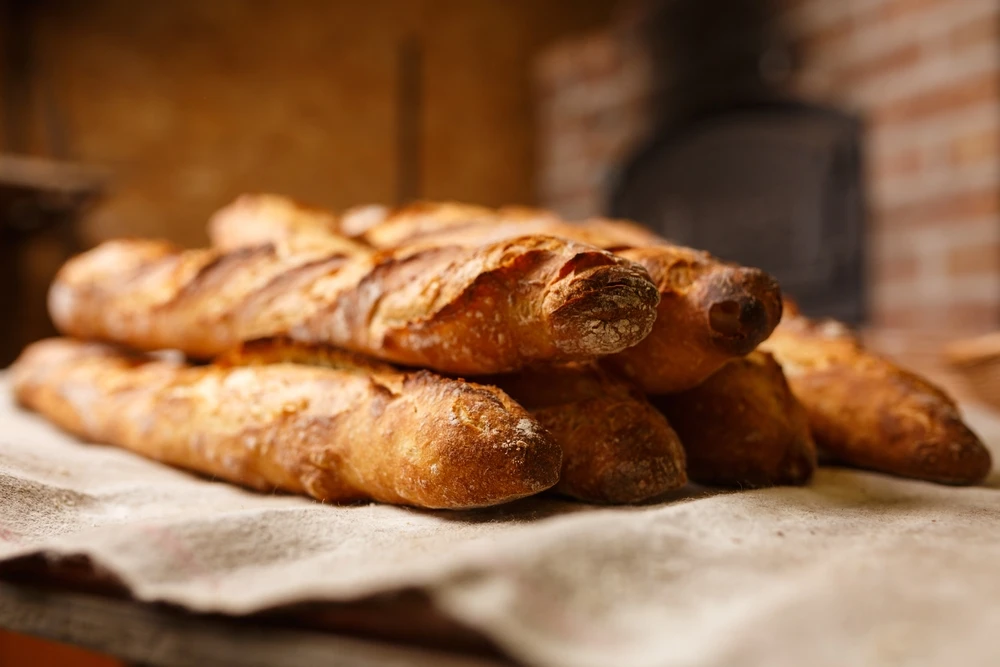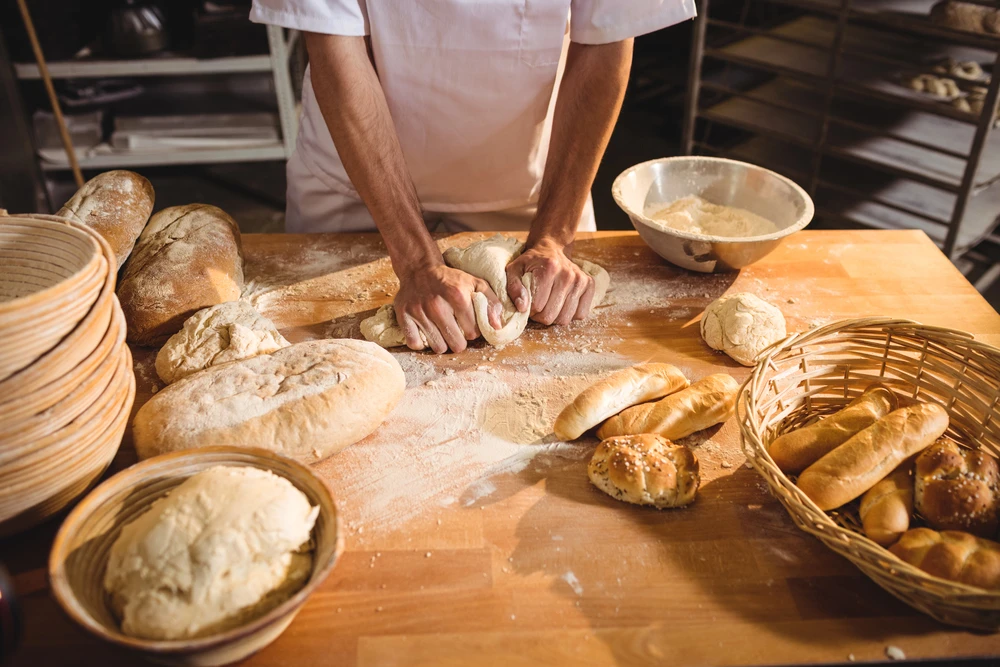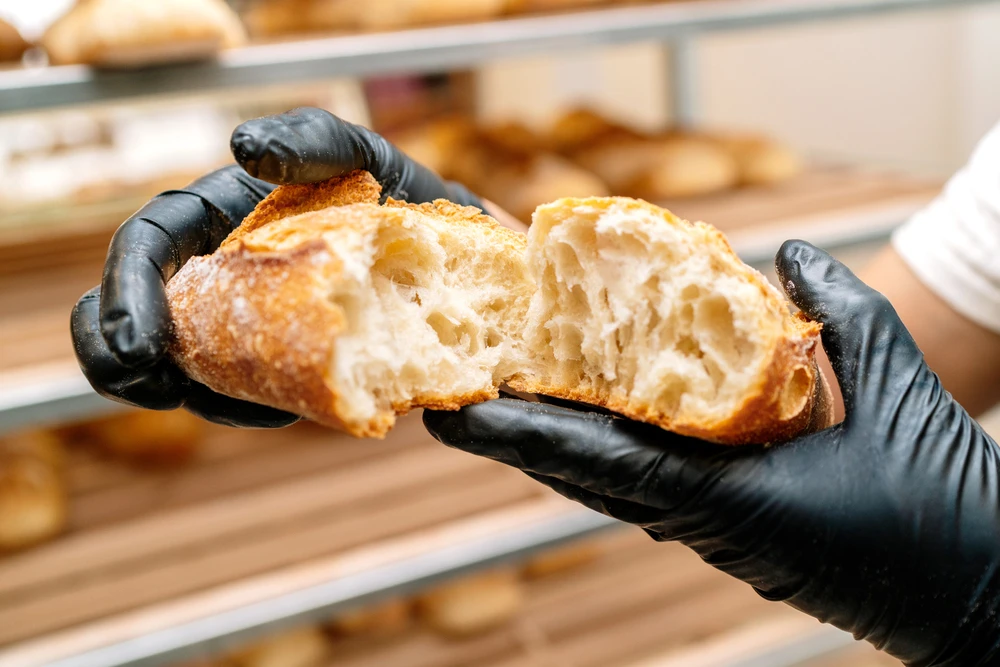Before the baguette: the reign of round loaves
For centuries, French bread was not long and thin. Bread was round, heavy, sometimes several kilos, and baked to last for days. It was cooked once a week in communal village ovens. The thick crust protected the crumb, making it possible to keep the bread edible for a long time. The poor ate dark bread made with rye or barley, dense and acidic. The wealthier classes ate white bread made from wheat flour. Bread often represented 70 to 80% of people’s daily diet. It was more than food: it was survival. The baguette, light, golden, and elegant, would arrive much later, transforming the French culinary landscape forever.
The legends surrounding the birth of the baguette
image par Philippe Ramakers/Shutterstock
A product of the French Revolution?
Some say the baguette was created in 1793 during the French Revolution. A new “bread of equality” would have been made, identical for all, long and easy to share. A loaf that could be broken into equal pieces, symbolizing unity. But this explanation, while appealing, is not confirmed. No document from the period mentions the baguette. It is more a legend that reflects revolutionary ideals than reality.
Napoleon and his soldiers
Another legend claims Napoleon ordered the creation of long loaves that soldiers could slip into their uniform pockets. Practical on the battlefield, easy to carry, this bread supposedly followed the armies across Europe. Once again, there is no proof, but the story underlines a key point: the baguette has always been seen as practical bread, linked to daily life.
The Viennese baker
A more credible explanation appears in the 19th century. In 1839, an Austrian, August Zang, opened a Viennese bakery in Paris. He introduced the steam oven, which gave bread a lighter texture and a thin golden crust. His long, airy loaves became very popular among Parisians.This is likely where the ancestor of the modern baguette was born: a bread more digestible and more elegant than the old round loaves.
The Paris subway workers
Finally, another anecdote places the baguette’s invention at the beginning of the 20th century, on the construction sites of the Paris subway. Workers came from different regions, tensions were high, and knives often came out at mealtime. To avoid fights, the engineers supposedly asked for a bread that could be broken by hand instead of cut with knives. Once again, hard to prove, but the tale fits perfectly with the baguette’s role as a bread of sharing.
The triumph of the baguette in the 20th century
In 1920, a law forbade bakers from starting work before 4 a.m. Large round loaves took too long to bake, so they were no longer ready for breakfast. The baguette, thinner and faster to bake, then became the bread of everyday life. From then on, its rise was unstoppable. After World War II, the baguette became a symbol of freedom and normal life. By the 1950s, it had firmly established itself as the favorite bread of the French. Today, over 6 billion baguettes are consumed in France every year.
The baguette, a living heritage
On November 30, 2022, UNESCO inscribed the French baguette on the list of Intangible Cultural Heritage of Humanity. An international recognition that confirmed what the French had known all along: the baguette is not just bread, it is a way of life.
How to choose a good baguette
Not all long loaves are equal. The French know how to spot a real baguette of quality:
-
The crust: it should be golden, slightly browned. Too pale = underbaked, too dark = bitter.
-
The sound: gently press the baguette. It should crackle, almost like music.
-
The shape: a true baguette is slender, elegant, with slightly pointed ends.
-
The crumb: inside, it should be light, with irregular holes. Too compact = poor fermentation.
-
Every year in Paris, a contest awards the title of “Best Baguette in Paris.” The winner has the honor of supplying the Élysée Palace, the residence of the French President, for an entire year.
How to enjoy a baguette the French way
In France, the baguette is not just bread: it is ritual. It accompanies every moment of the day.
-
Breakfast: cut into slices with butter and jam, sometimes dipped into a bowl of coffee or hot chocolate.
-
Lunch: the famous “jambon-beurre” sandwich – baguette, butter, ham – is iconic. It is the most popular sandwich in France, with over a billion sold each year.
-
Apéritif: served with pâté, rillettes, or slices of cured sausage.
-
Dinner: always present on the table, to accompany meats, sauces, or cheese.
The baguette is the hand extended at the table: you share it, you break it, you pass it to your neighbor.
Cultural anecdotes
-
Never put a baguette in the fridge. The cold makes it go hard. It’s best kept in a cloth or paper bag.
-
Never place a baguette upside down on the table. In French tradition, it is bad luck – a superstition dating back to the Middle Ages.
-
The “quignon” disappears quickly. The crusty end piece of the baguette is often eaten on the way home from the bakery.
A baguette must be aerated / Photo chosen by Monsieur de France: depositphoto
FAQ
Who invented the baguette?
Its true inventor is unknown. Theories mention the French Revolution, Napoleon, Viennese bakers, and Paris subway workers.
Why is the baguette 65 cm long and 250 g in weight?
Because this became the standard size: quick to bake, convenient to carry, and ideal for everyday life.
Why is the baguette so popular in France?
It became essential after 1920, when laws forced faster baking, and its crispy crust and soft crumb made it beloved.
What makes a good baguette?
A golden crust, a crackling sound, a long tapered shape, and an airy interior with irregular holes.
How many baguettes are eaten in France each year?
More than 6 billion are baked and eaten annually, making it the most consumed bread in the country.
What can you eat with a baguette?
With butter and jam, ham and cheese, pâté, sausages, or simply at every meal.
When did UNESCO recognize the baguette?
On November 30, 2022, the baguette was inscribed as Intangible Cultural Heritage of Humanity.








